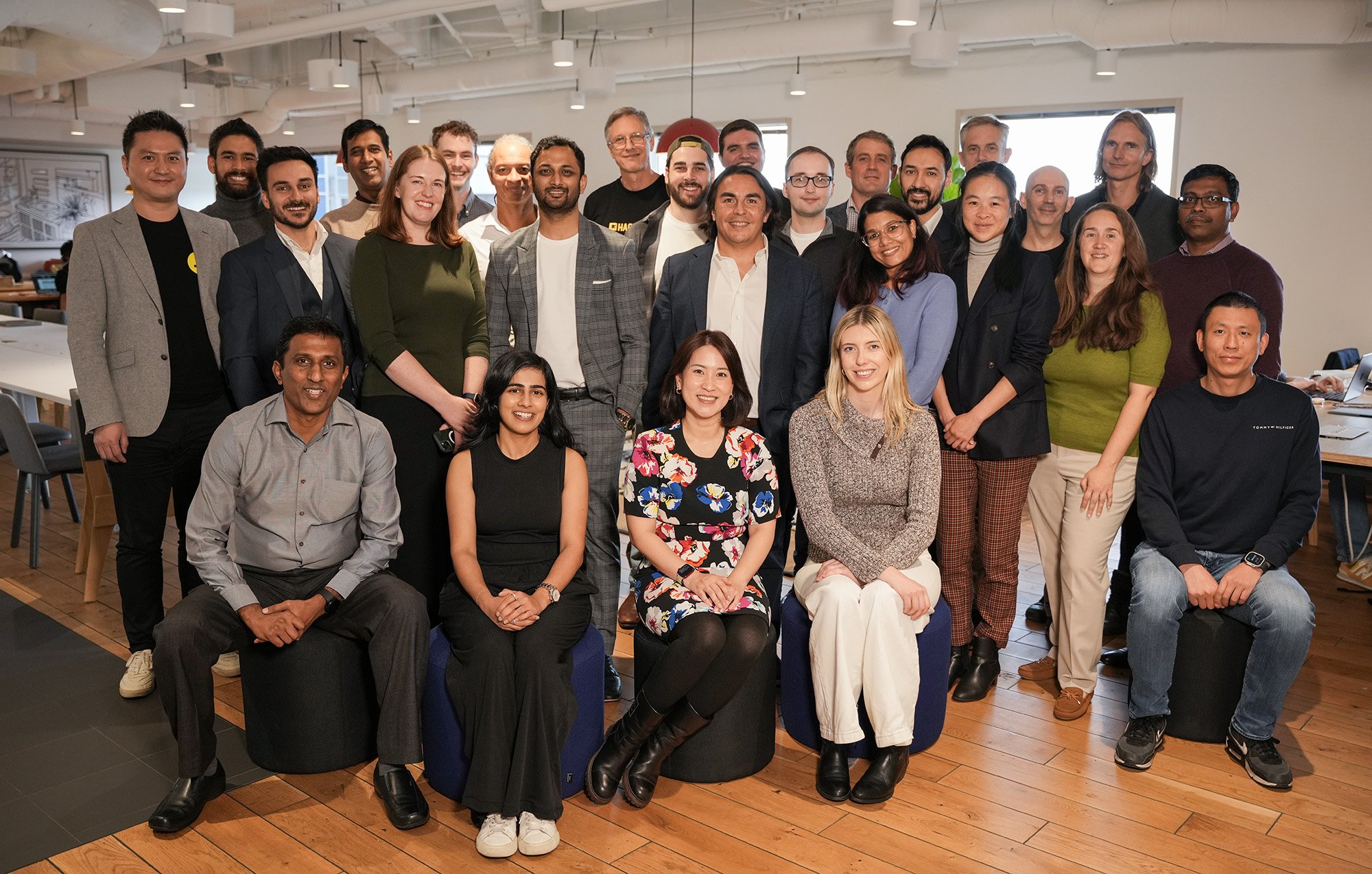Could the Job Market Face a Dot-Com Bust Redux in 2025?
Image Credit: Sergii Bozhko | Splash
After the 25th anniversary of the dot-com bubble’s peak on March 10, 2000, economists and analysts are reflecting on parallels between today’s labour market and the vibrant employment landscape of the late 1990s. With the U.S. economy navigating a mix of technological promise, geopolitical tensions, and policy shifts, a pressing question looms: Can the job market hold steady, or is it teetering toward collapse?
A Labour Market Echoing the 1990s
The late 1990s were a golden era for U.S. workers, with real wages rising 2% annually, unemployment falling to 4.0% by 1999, and a tech-driven boom—sparked by the internet’s rise—pushing GDP growth above 4%. Early 2025 shows a labour market with similar grit. The Federal Reserve’s benchmark interest rate, now between 4.0% and 4.5%, nears the 4.75%–5.0% range of 1999. The Bureau of Labor Statistics reports the economy added 151,000 jobs in February 2025, up from a revised 143,000 in January, though shy of the 160,000 analysts at FactSet expected.
Unemployment edged up to 4.1% in February 2025, a tick above 1999’s low but still signalling strength, though it doesn’t match 2023’s 3.5% nadir. Shadows loom over this resilience under President Donald Trump’s second term, which began January 20, 2025. Tariff threats stir trade war fears, while the Department of Government Efficiency slashed 10,000 federal jobs in February. Plans to deport 15 to 20 million immigrants add further uncertainty.
[Read More: Trump’s $500 Billion AI Investment Fuels Growth in Blockchain and AI Cryptocurrencies]
The AI Boom: Promise or Peril?
In 1999, the World Wide Web’s ascent drove GDP to 4.8% and fuelled tech-sector jobs. Today, artificial intelligence stands as the new frontier, igniting optimism and unease. AI has propelled stock gains for the “Magnificent Seven” tech giants—Apple, Microsoft, Nvidia, Amazon, Alphabet, Meta, and Tesla—though tariff fears triggered sell-offs in early 2025, raising overvaluation worries. In January, China’s DeepSeek unveiled its R1 model, a low-cost rival to ChatGPT, sparking a US$1 trillion tech stock plunge, with Nvidia alone shedding US$600 billion.
High interest rates, now above 4%, amplify the stakes. The dot-com crash of the early 2000s looms as a cautionary tale: transformative tech can falter, and not every AI bet will pay off. Still, the sector’s potential to reshape industries keeps investors and analysts watching closely.
[Read More: Why GPUs Are the Powerhouse of AI: NVIDIA's Game-Changing Role in Machine Learning]
Shifting Employment Landscapes
Artificial intelligence is reshaping the job market. An NBER working paper by Harvard Kennedy School researchers David Deming and Lawrence H. Summers, compares AI to historical disruptors like steam power, warning it could displace routine high-skill workers such as coders while boosting demand for roles in analysis and decision-making. Since 2010, STEM employment has surged 47% through 2023, reaching approximately 11 million jobs, driven by computer-related roles according to the Bureau of Labor Statistics, while retail sales positions have dropped 25%—a loss of 850,000 jobs by 2023—due to e-commerce’s rise, per the same NBER study. This divide, with high-paid jobs growing and low- to middle-wage roles stagnating, mirrors the late 1990s tech boom, when IT employment soared 50% from 1995 to 1999 and clerical work leveled off, per BLS records.
The labour market remains robust. Prime-age labour-force participation hit 83.3% in January 2025, the highest in two decades, per the Economic Report of the President, approaching the 84.6% peak of 1999 recorded by BLS. Wages grew 4.1% year-over-year through January 2025, outpacing the late 1990s’ nominal 3–4% gains, while unemployment rose from 4.0% in January to 4.1% in February, matching 1999’s annual average, according to BLS data. A tight labour market, with 8.5 million job openings in January 2025 per BLS, echoes the post-2021 “great resignation” era when monthly quits peaked at 4.5 million.
Economic Headwinds and Policy Challenges
Economic stability faces challenges. Inflation stood at 2.7% in January 2025, per BLS, exceeding 1999’s 2.2% annual average. Federal Reserve rate hikes, climbing from 0.25% in March 2022 to 5.25%–5.5% by July 2023, cooled an overheated job market, slashing vacancies from 12 million in March 2022 to 8.5 million in January 2025, per BLS Job Openings and Labor Turnover Survey. Consumer confidence dipped to 98.7 in February 2025 from 100.4 in January, according to the Conference Board, amid fears of President Trump’s proposed tariffs—25% on Mexico and Canada, 10% on China—that could raise interest rates and hinder job growth, as reported by Reuters in March 2025. The U.S. Chamber of Commerce notes persistent worker shortages, with the labour force at approximately 161 million in January 2025, down 1.7 to 2 million from 164.5 million in February 2020 after population adjustments, per BLS figures.
White-collar sectors like tech and finance struggle to fill positions, per U.S. Chamber reports, while job vacancies dropped from 12 million in March 2022 to 8.5 million in January 2025. Annual hires fell from 80.2 million in 2022 to 70.1 million in 2023, signaling cooling demand, according to BLS data. Construction and hospitality show labour surpluses, while high-skill fields face deficits, worsened by an aging workforce—median age 42.2 in 2024, per BLS—and automation’s erosion of middle-skill jobs, as documented by the OECD in 2024.
[Read More: AI Could Replace Two-Thirds of Jobs – How Safe Is Yours?]
Optimism Tempered by Caution
Despite these challenges, glimmers of optimism remain. J.P. Morgan analysts describe the economy as “balanced, rather than overheating”, pointing to steady long-term unemployment—hovering near 1.2% in January 2025, per the Bureau of Labor Statistics—as a sign of stability rather than strain. The potential for artificial intelligence to drive productivity gains akin to the internet’s impact in the 1990s fuels hope, though such benefits have yet to fully emerge, according to economic data. The U.S. Chamber of Commerce highlights worker shortages tied to retiring baby boomers, urging policies like higher visa caps and childcare investment to bolster the labour force.
Looking Ahead: Stability or Storm?
With the 25th anniversary of the dot-com bust, the labour market stands at a pivotal moment. Its echoes of the 1990s—tech-fuelled growth, tight conditions and strong participation—offer a foundation of strength. Prime-age participation hit 83.3% in January 2025, per the Economic Report of the President, while unemployment held at 4.1% in February, per BLS, reminiscent of 1999’s 4.0%. Yet geopolitical tensions, policy shifts like federal job cuts, and AI’s unproven economic payoff cast long shadows.
[Read More: Do You Know That You Are Witnessing the 5th Industrial Revolution?]
Source: Market Watch, NBER, Yahoo! News













